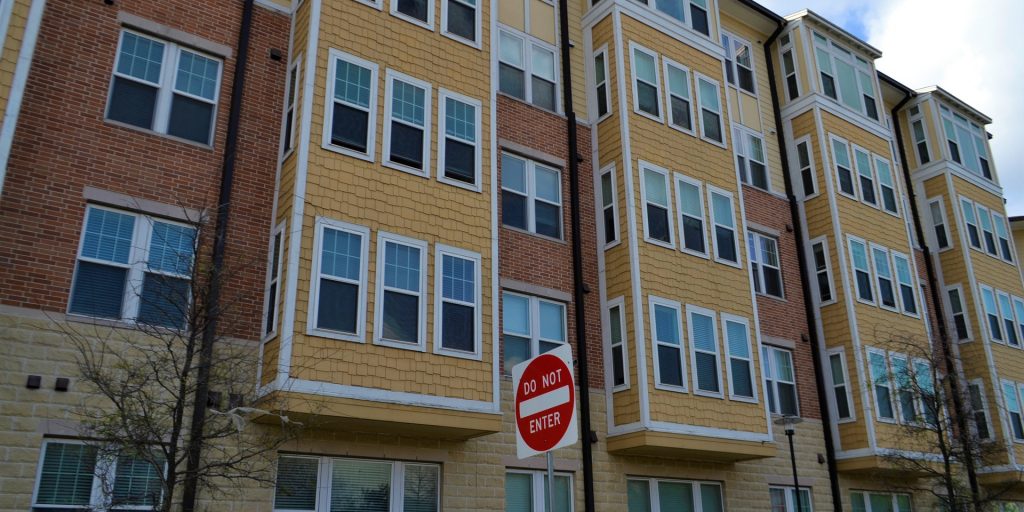Report: Addressing climate change without driving up affordable housing costs will be a delicate balance
Los Angeles wants to achieve carbon neutrality by 2050. Completion of that ambitious goal hinges on decarbonization of the city’s building stock, which currently accounts for 43 percent of L.A.’s total greenhouse gas emissions.
Within the broader push toward clean energy, city leaders would like to see 22 percent of its buildings decarbonized by 2035, 34 percent by 2035 and 44 percent by 2050. Over the last decades, reducing emissions in buildings has traditionally been achieved through tax incentives targeting single-family homeowners, encouraging them to transition to clean energy.
But while effective in some ways, this approach leaves many people behind, failing “to reach those who are low-income, who rent, or who live in multi-family buildings,” according to an article by NRDC describing a recent report from Arup, an engineering and consulting firm, titled “Los Angeles Affordable Housing Decarbonization Study Phase 2.”
“Both climate change and the housing crisis pose existential threats to L.A., and both must be addressed with utmost urgency,” reads the report. With a county-wide shortage of roughly 500,000 affordable housing units according to Urbanize Los Angeles, a collection of news sites covering real estate development and urban planning, the city’s buildings without driving up housing costs will be a complex endeavor.
There will be many upfront expenses required to electrifying the city’s buildings, and much of those costs will be paid for by property owners—like those associated with replacing natural gas appliances and upgrading electrical infrastructure to accommodate an increased load. While clean energy upgrades can offset some of these expenses through lower monthly utility costs and renters will benefit from improved air quality (like the addition of air conditioning), a thoughtful and comprehensive approach to decarbonization is necessary to protect affordable housing units.
“If these installation costs are passed on to renters, they will exceed renters’ utility bill savings and result in higher combined household costs for renters,” the report continues. To that end, an equitable strategy is necessary in order to “prioritize low- and middle-income residents experiencing rent burden by ensuring their housing remains affordable.”
Affordable housing can come in various forms, rent structures, building attributes and price ranges. Because there’s not a one-size-fits-all model, this complexity means that strategies designed to decarbonize market rate-housing can’t simply be replicated. Irresponsibly employing the same strategies in the affordable housing realm could trigger rent increases, increased utility costs and displacement of those most vulnerable.
To make sure that doesn’t happen, instead of tackling the two problems separately, the report recommends that addressing climate change and affordable housing should be considered together.
“Centering affordable housing in decarbonization policy development can yield better results in terms of societal benefits and market transformation,” the report notes. “Affordable housing should be included in future decarbonization mandates but will need targeted and comprehensive programs and support to prevent displacement and other unintended consequences. If not addressed in tandem, the goals of affordable housing preservation and decarbonization will be in conflict. Addressing these challenges together poses greater opportunity than addressing either one alone.”
Beyond the economic implications of an imbalanced approach to these two related problems, the report notes that “preservation of affordable housing is essential to climate resilience,” because “displacement can be viewed as a worst-case scenario with high individual and social costs. California is already losing housing to fire faster than new housing is being built, and extreme heat will make housing less habitable without remediation.”
To that end, because so many buildings are going to require work to meet the city’s decarbonization goal in coming decades, there’s a potential for opportunity along with the challenge. To that end, programs designed to decarbonize communities should consider affordability protection, tools to expand the pool of affordable housing units, wealth-building opportunities for tenants, as well as health and safety retrofit requirements.
With the right policies, which the report says should be crafted with all relevant stakeholders seated equally at the same table, “Decarbonization can be leveraged to drive investment into existing affordable housing to improve performance and keep units fit for purpose in a changing climate.”




















